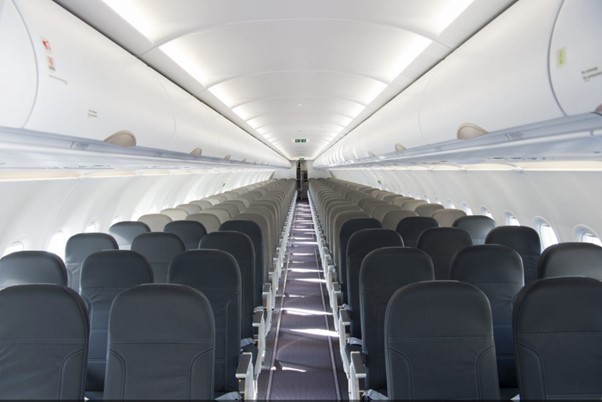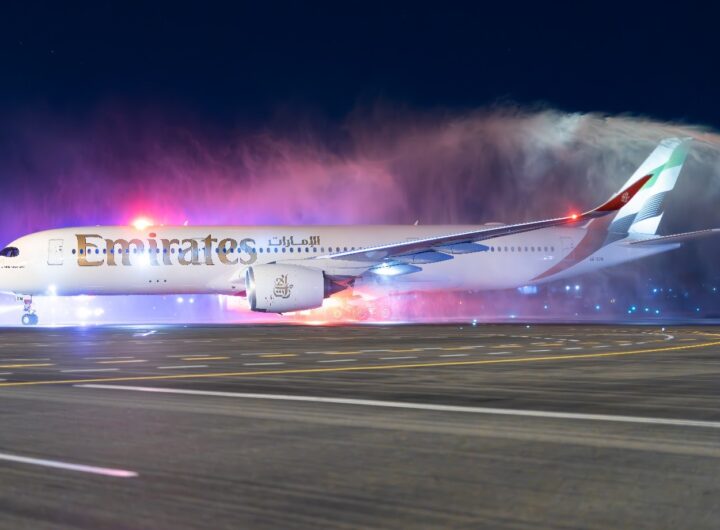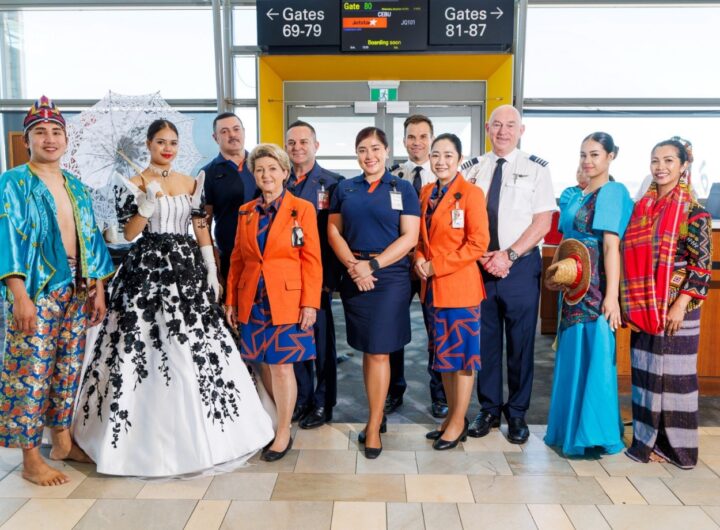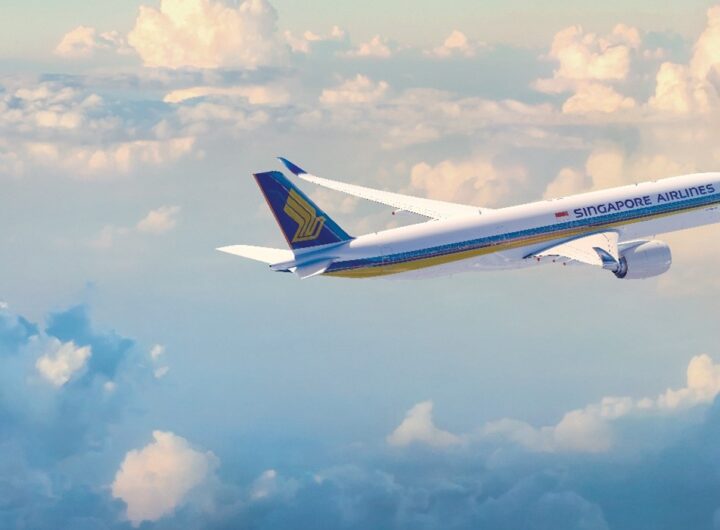
Airbus plans to recertify its best-selling A320 single-aisle aeroplane with a maximum seating capacity of 194 passengers in what would be an extremely high-density and potentially knee-crushing version of the plane.
Airbus appears to be aiming to push the limit by squeezing in an additional six seats in a fashion that would partially overlap the main escape doors in the current high-density version of the A320.
Airbus has been working on ways for airlines to maximise revenue from the shorter A320 for years, even though the stretched A321 is the easiest option for them to boost passenger capacity in a short-haul aircraft.
After a few years of testing, Airbus has been able to increase the A320’s capacity from 180 to 200 passengers without compromising much legroom.
An innovative but controversial lavatory design saw Airbus cut the aft galley by half and cram two toilets into the freed-up area, allowing for six extra seats.
An extra row of seats was added to the aft galley area in the place of the two toilets that were there before. Space-Flex V2 is the name given to Airbus’ high-density layout
Flight attendants and passengers have both expressed dissatisfaction with the ultra-slim bathrooms that come standard on Space-Flex aircraft.
Airlines, on the other hand, are looking for ways to cram even more passengers into the same amount of space.
Airbus will have to reduce the distance between seats to just 28 inches and place certain seats so that they partially overlap the escape doors in order to accommodate an additional six seats.
LOPA, or Layout of Passenger Accommodations, is a concept that may not appeal to every airline, but low-cost carriers may perceive the opportunity to generate additional cash even when passengers are harmed by it.
Cebu Pacific, a low-cost airline based in the Philippines, just purchased an Airbus A330 with a higher passenger capacity. For an additional 20 seats, it was necessary to reconsider the location of the restrooms and to include narrow line seating.
Airbus even came up with space-saving innovations for its A380 superjumbo a few years ago in an attempt to get more orders for the much-maligned plane. Because of scepticism, the A380 project was forced to be shut down by Airbus, despite the company’s efforts.
It is ultimately up to the airlines, and there will be those who would do anything to pack more passengers into the cabin and those who will be more prudent and abandon this arrangement in order to keep their integrity in caring for their customers.
 Emirates A350 Debuts in Adelaide with New Premium Economy, Boosting Connectivity and Comfort to Dubai
Emirates A350 Debuts in Adelaide with New Premium Economy, Boosting Connectivity and Comfort to Dubai  Qantas Elevates A380 First Class with New Fine Dining, Aesop Amenity Kits and Bollinger Champagne
Qantas Elevates A380 First Class with New Fine Dining, Aesop Amenity Kits and Bollinger Champagne  Qatar Airways’ New Formula 1 Livery Takes Off: Swizz Beatz–Designed Boeing 777 Tours the World After Qatar Grand Prix Debut
Qatar Airways’ New Formula 1 Livery Takes Off: Swizz Beatz–Designed Boeing 777 Tours the World After Qatar Grand Prix Debut  Jetstar Launches First Direct Brisbane–Cebu Flights: New Gateway from Queensland to One of the Philippines’ Most Beautiful Islands
Jetstar Launches First Direct Brisbane–Cebu Flights: New Gateway from Queensland to One of the Philippines’ Most Beautiful Islands  Singapore Introduces First-Ever Mandatory Sustainable Aviation Fuel Levy Starting 2026
Singapore Introduces First-Ever Mandatory Sustainable Aviation Fuel Levy Starting 2026  Seabourn’s ‘Explore More Event’: Save Up to 15% Plus Shipboard Credit on Ultra-Luxury Cruises
Seabourn’s ‘Explore More Event’: Save Up to 15% Plus Shipboard Credit on Ultra-Luxury Cruises  Silversea Wave Season 2026: Save Up to 40% on Luxury Cruises to All Seven Continents
Silversea Wave Season 2026: Save Up to 40% on Luxury Cruises to All Seven Continents 